Civil service fast stream
The fast stream is the government’s accelerated development programme for the UK civil service. But how big is it? How many different streams are ther
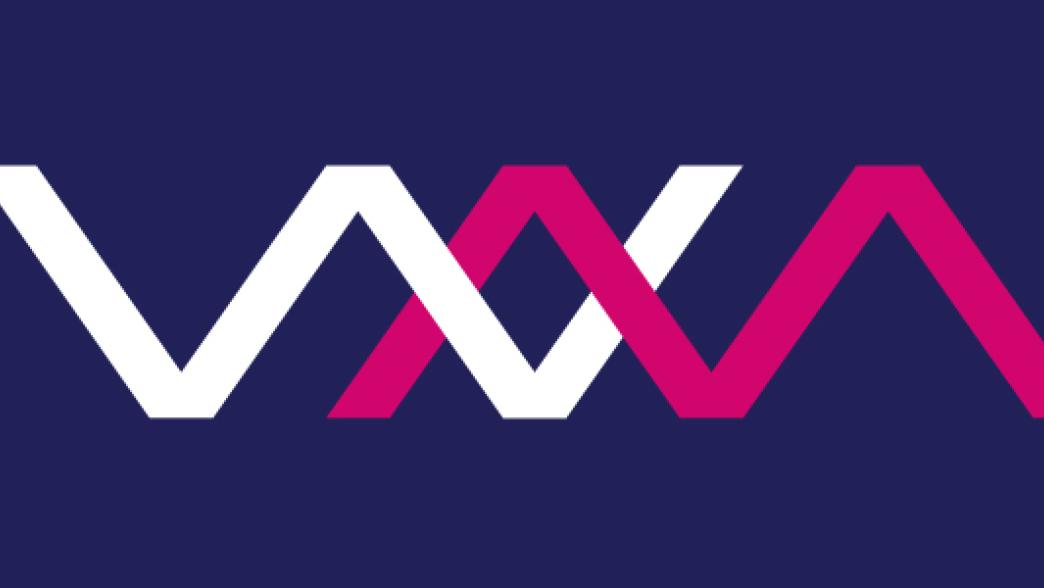
What is the civil service fast stream?
The civil service fast stream is the government’s accelerated development programme for the UK civil service. It provides talented graduates with the core skills needed to become the future leaders of government departments. Applications are open to everyone who meets the nationality requirements and has a class 2.2 degree or above. Many fast streamers eventually take on senior management roles in the civil service.
The fast stream consists of 15 different schemes. Many of these belong to specific professions – for example, there is a human resources scheme and a property scheme – although the largest single scheme is a generalist scheme. The generalist scheme allows fast streamers to work across different types of roles in different departments across three years. Applicants are allowed to select up to four fast stream schemes to apply to, and rank them by preference.
There was a large increase in the number of specialist schemes after 2010 as a result of attempts to develop specialist as well as generalist skills in the civil service. A full list of the schemes is provided by the civil service.[1] The precise nature of schemes can often change.
Fast streamers enter departments at Higher Executive Officer (HEO) level, and typically take around four years to progress to Grade 7, the sixth most senior grade. The fast stream is not the only way into the civil service, however. Other forms of recruitment include:
- The civil service apprenticeship scheme that offers an alternative to university.
- HMT graduate programme – HM Treasury recruits separately from the fast stream, although the application process is very similar.
- Jobs advertised on GOV.UK and online job boards.
The fast stream has grown dramatically in recent years. Applications rose from 21,135 in 2015 to a record high of 64,697 in 2020, although dropped slightly to 59,603 in 2021.
Applications reduced substantially when numerical and verbal reasoning tests were introduced in 2004, but rose rapidly after the application process was changed to replace numerical and verbal reasoning tests with situational judgement tests in 2016. This change also resulted in more registrations leading to completed applications. In 2015, only 55% of initial registrations for the fast stream resulted in completed applications, but this increased to 82% in 2016.
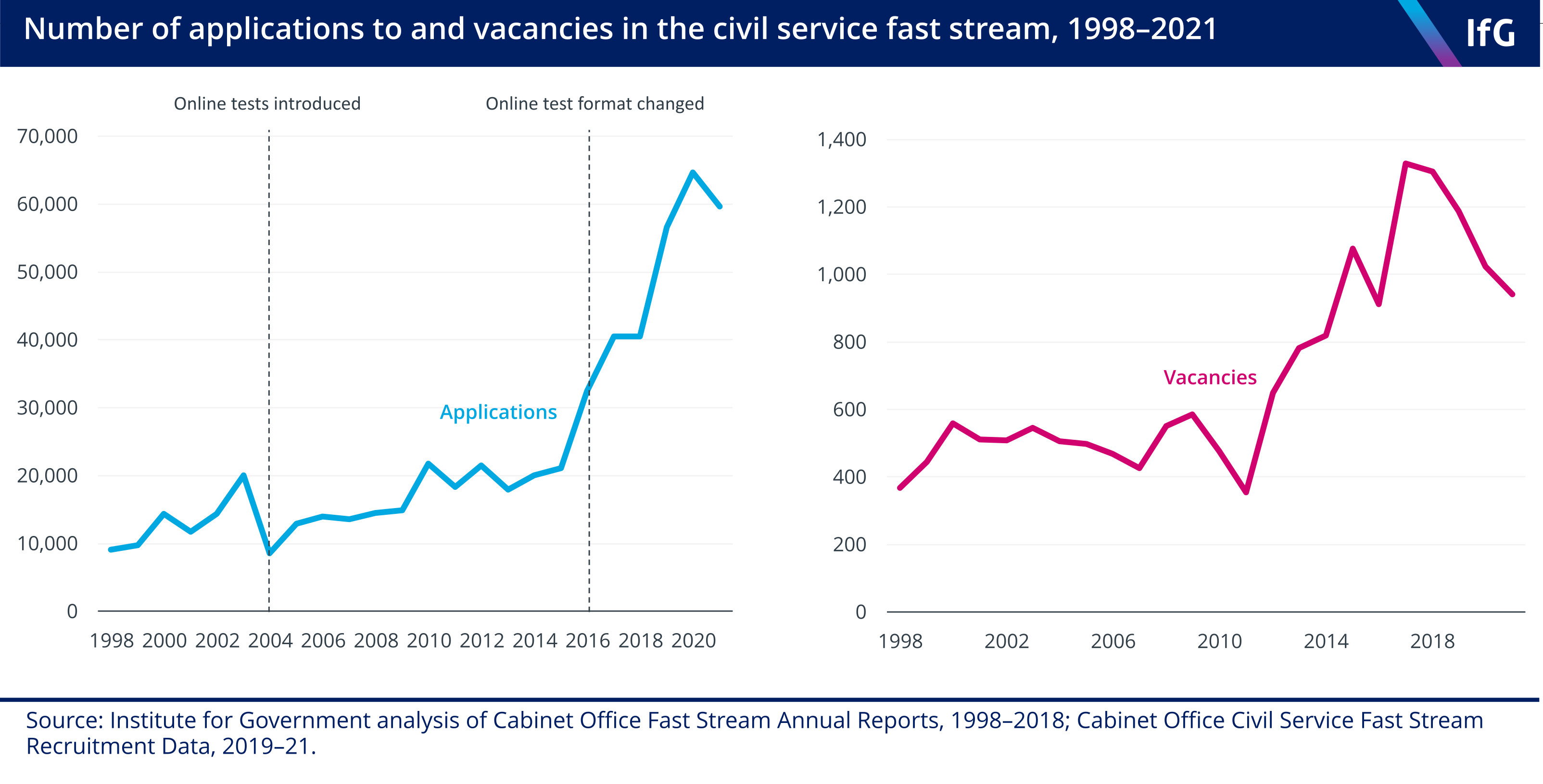
To which schemes do applicants apply?
In 2021, the generalist scheme received the highest number of applications, with 38,424 expressing a preference of some sort for this scheme. 9,437 put the generalist scheme as their first preference – making it the scheme with the second highest applications by first preference, with only the diplomatic service (15,872) receiving a larger number. The Government Operational Research Service received the fewest applications, both overall (3,250) and as a first choice (457).
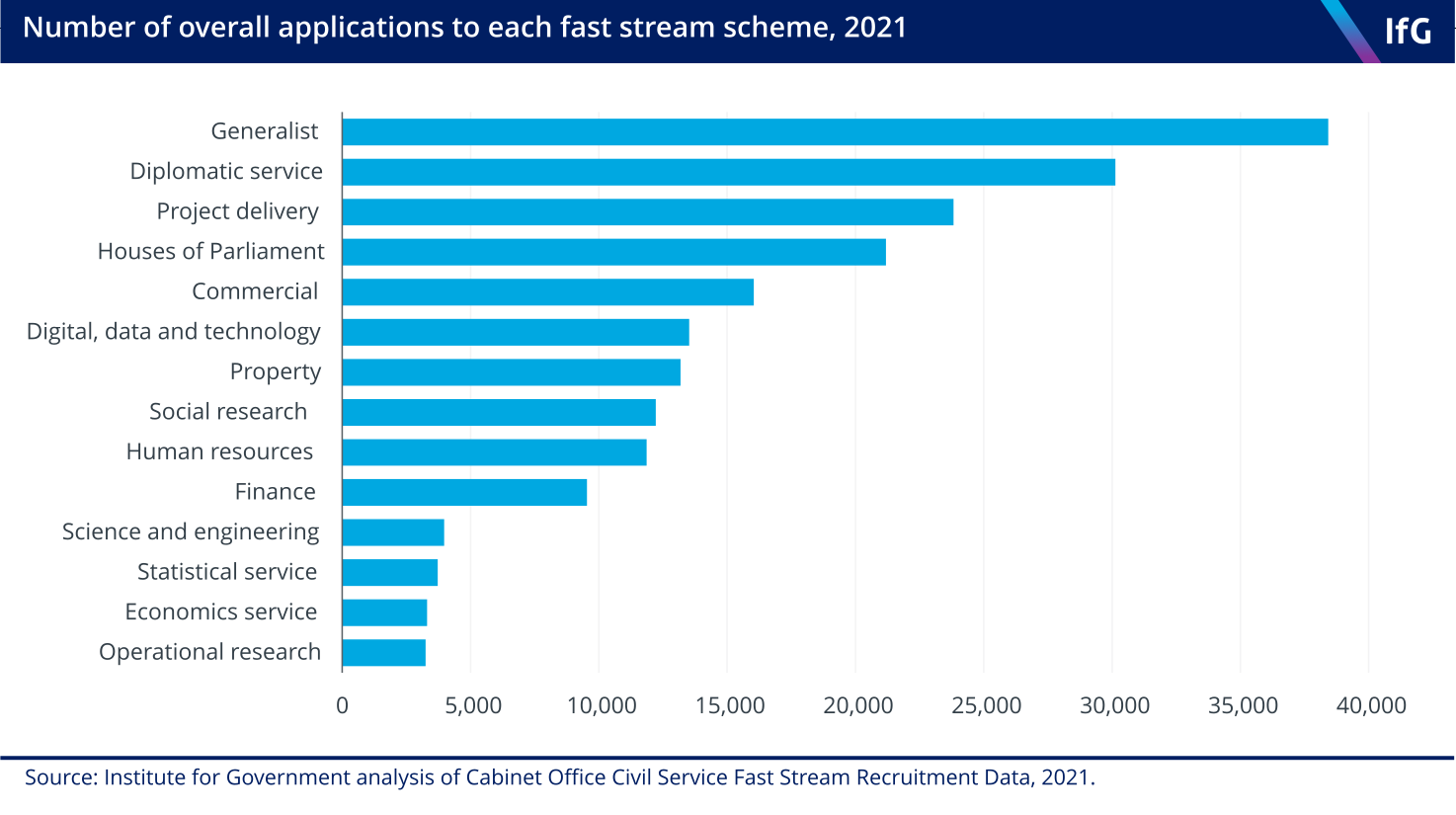
To which schemes are successful applicants appointed?
In 2021, the generalist scheme once again had the highest number of vacancies and largest intake of new fast streamers. This scheme had 332 vacancies – the Government Economic Service was the only other scheme with over 100 – and 404 applicants were recommended for appointment. The Houses of Parliament scheme had just four vacancies, the lowest number of any scheme, and recommended the same number of candidates for appointment.
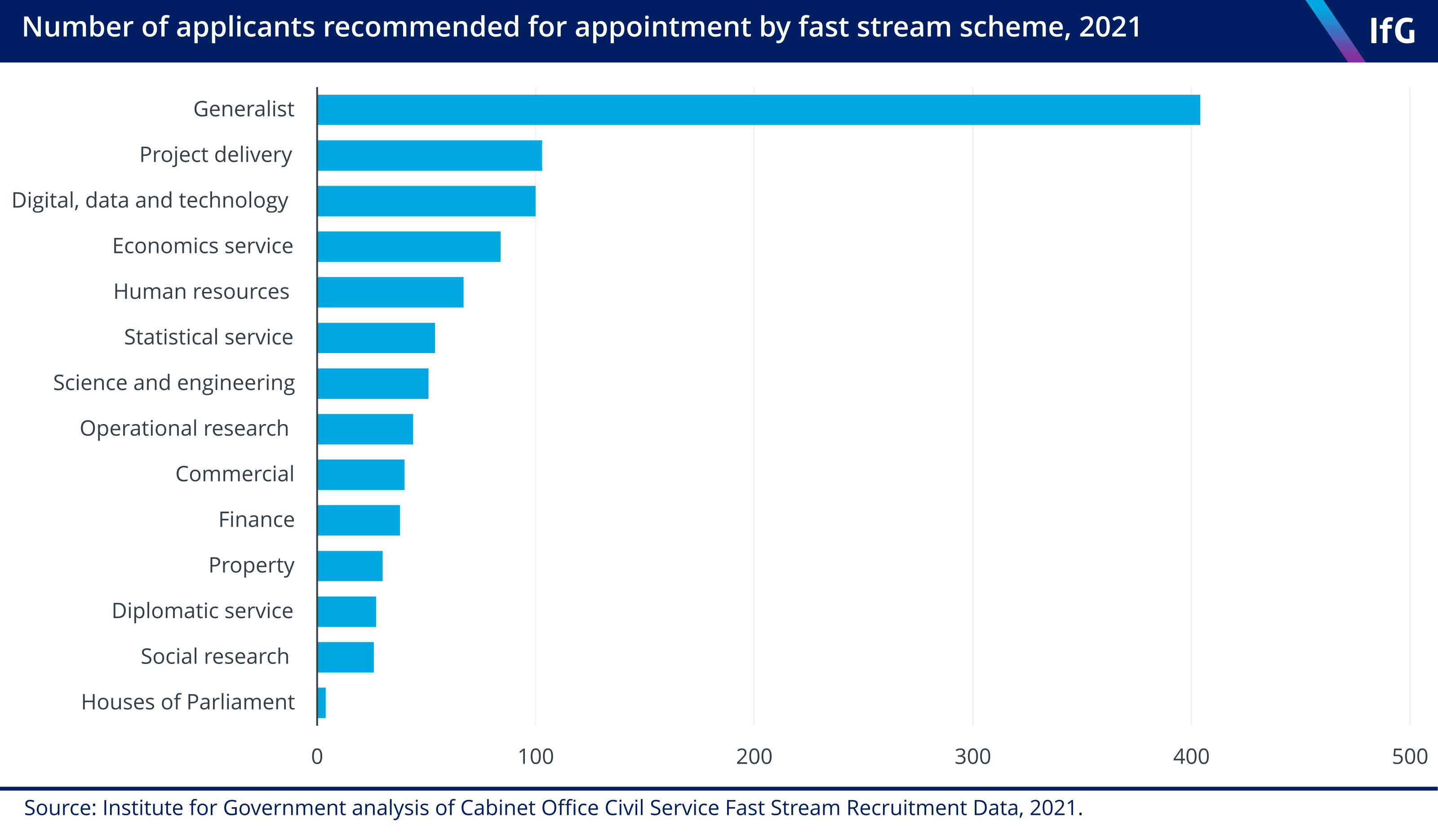
How competitive is the fast stream?
The overall success rate for the fast stream – the number of applicants recommended for appointment as a proportion of all applicants – was 1.8% in 2021. This was marginally lower than 2020, continuing a downward trend since 2013.
Different streams have different success rates. In 2021, these varied between 9.6% (operational research) and 0.1% (Houses of Parliament). A full breakdown is provided by the government.[2]
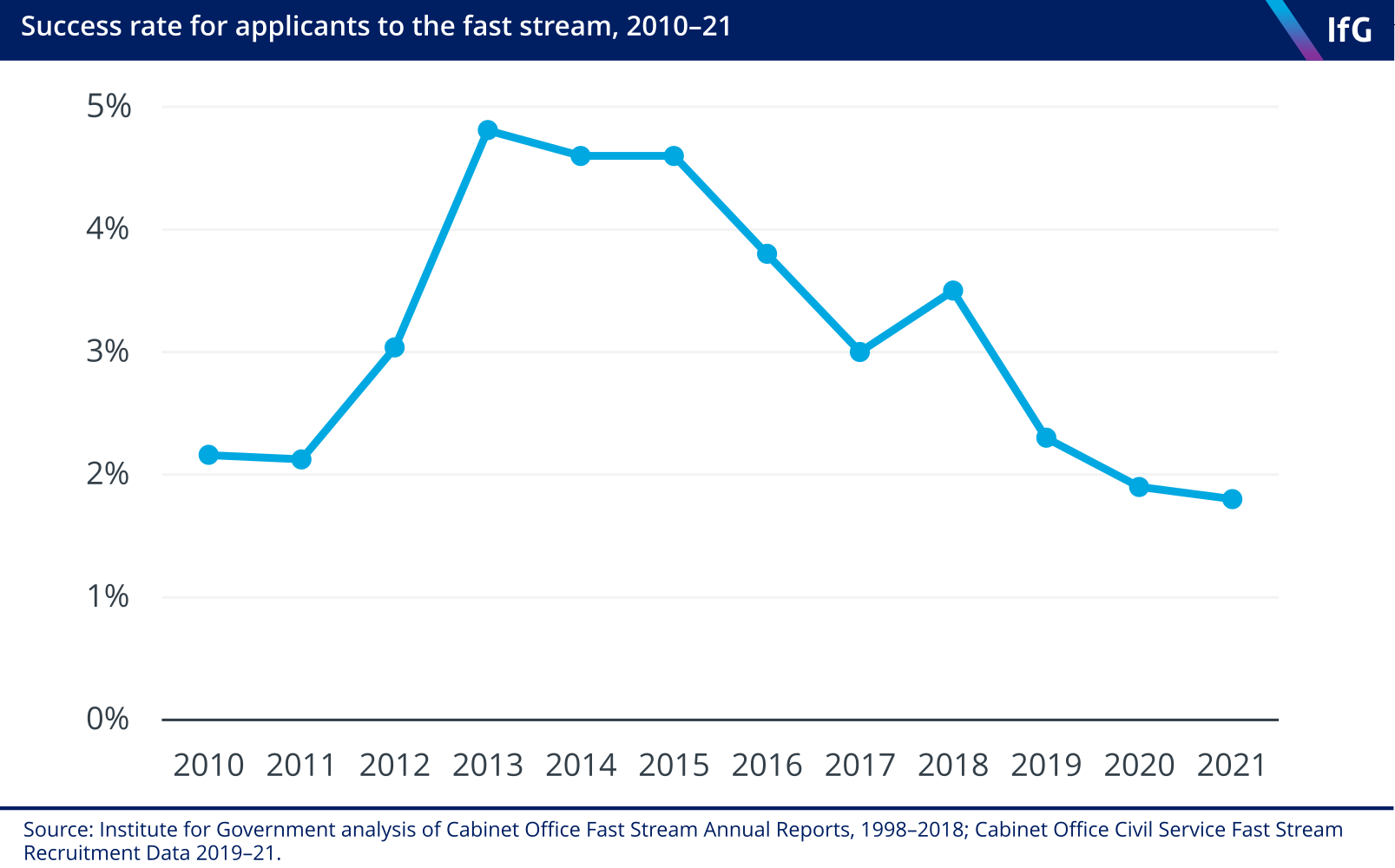
How diverse is the fast stream?
Data from 2021 shows that women, LGB+ and disabled candidates have disproportionately high success rates – a greater proportion of successful candidates are from these groups than the proportion which apply. In contrast, a disproportionately small number of successful candidates are from an ethnic minority background or self-identify as from a lower socio-economic background.
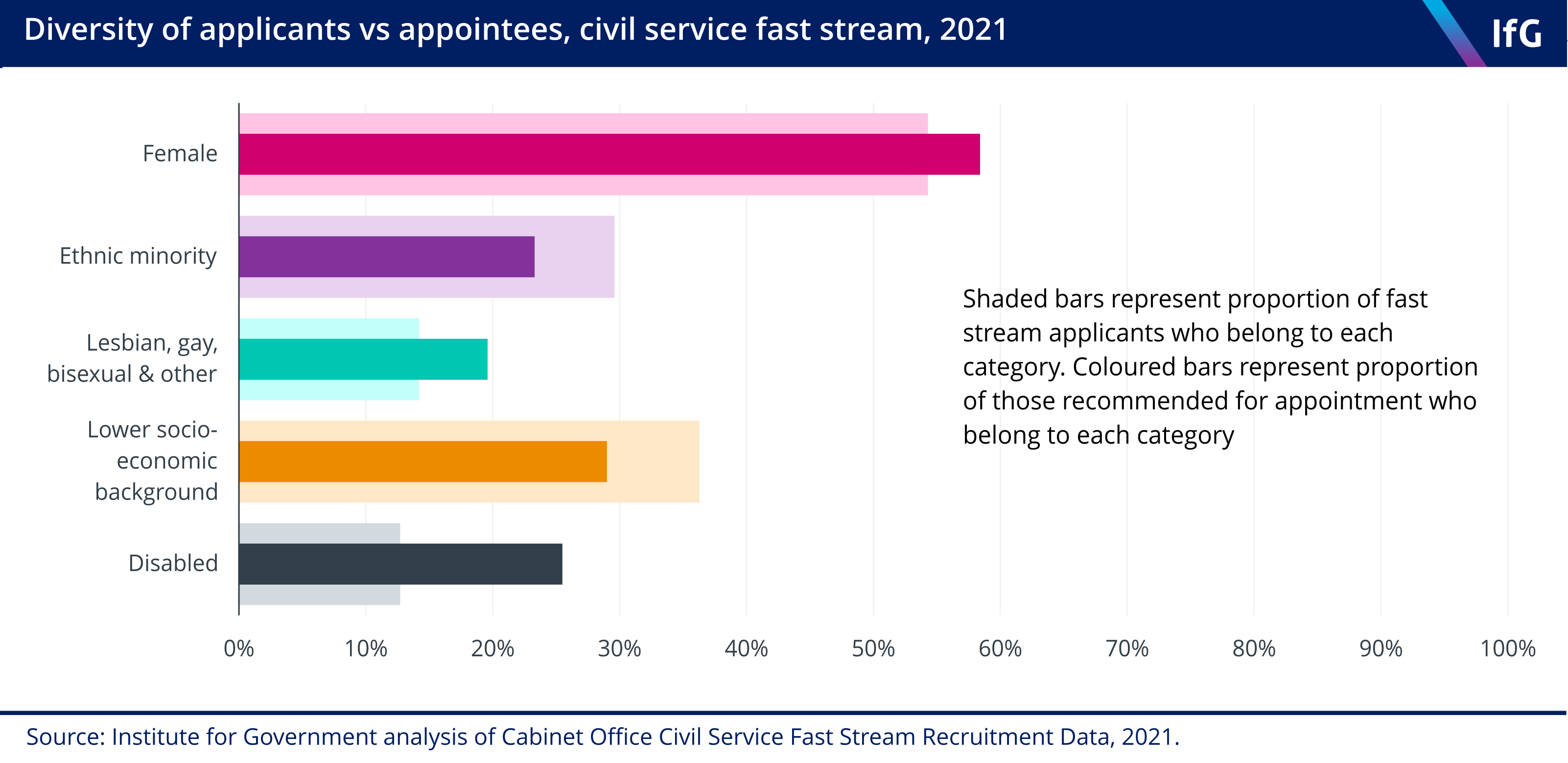
Data on the home location of applicants is only available for applicants who are not already civil servants. London has the largest number of applicants of any single region, with 27.3% of applicants based in the capital. Approximately 13.4% of the UK’s overall population live in London.
Applicants from the East of England and South West of England have the highest success rate, at 2.2%. Applicants from Northern Ireland have the lowest success rate, at 1.2%.
- Civil service fast stream, All Schemes, www.faststream.gov.uk/all-schemes/index.html
- Civil service fast stream, Civil Service Fast Stream: recruitment data 2021, https://assets.publishing.service.gov.uk/government/uploads/system/uploads/attachment_data/file/1039977/2021-CS-Fast-Stream-External-Annual-Report-Tables-pdf-15.11.21.pdf
- Topic
- Civil service
- Publisher
- Institute for Government